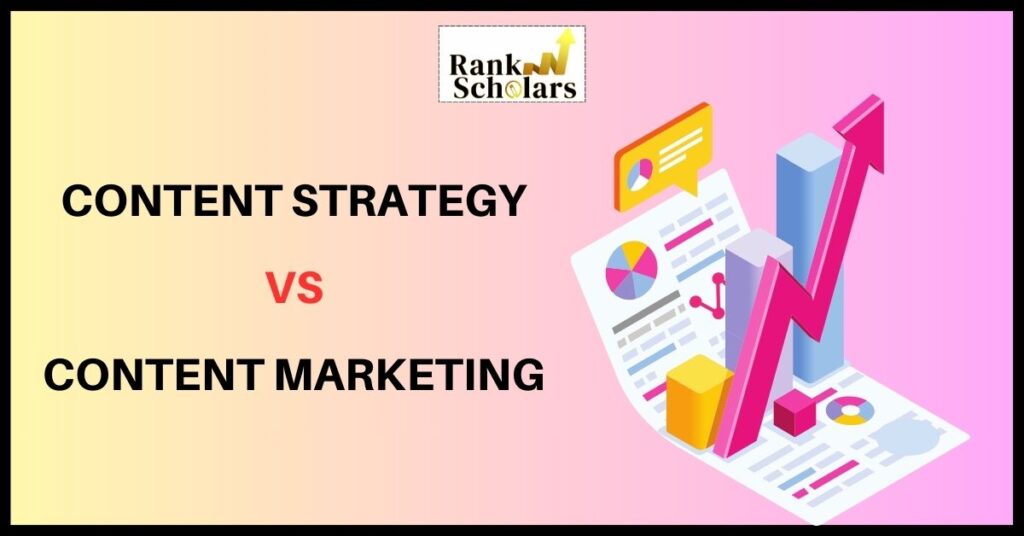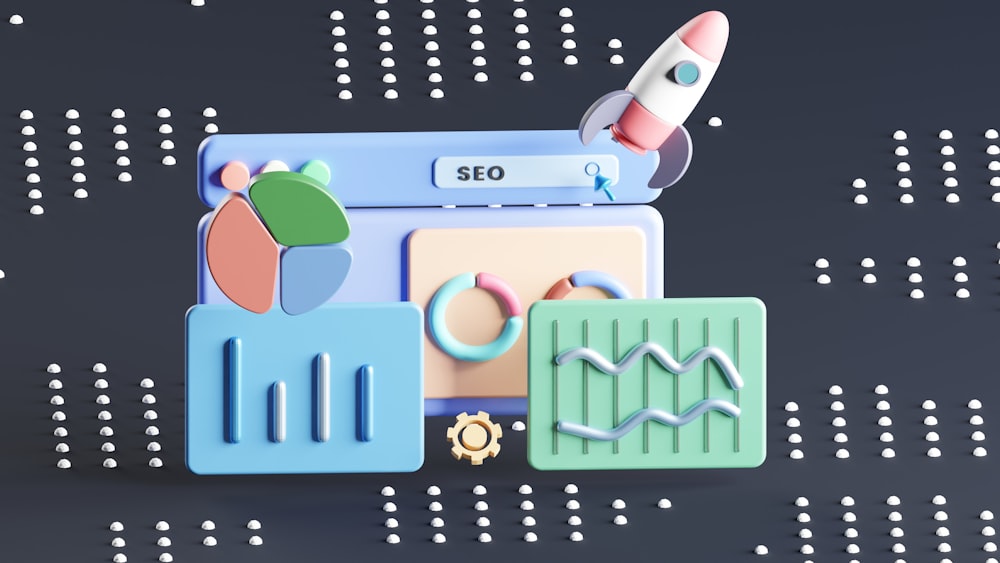Whether you’re just starting on your digital presence or have been creating an online presence but haven’t been able to drive desired results from it, content strategy and content marketing are two important tools that can help you in getting the results you want and establish a solid online presence.
While many people may use these terms interchangeably or may not have a content strategy at all, it is crucial to know that both content strategy and content marketing are equally important for creating a credible online presence and both serve separate purposes, hence these terms cannot be used interchangeably.
But what is the difference between content strategy vs content marketing? Let’s look at the meaning, examples, and tips for content strategy and content marketing respectively along with differences between both the terms.
What is Content Strategy?
Content Strategy is a roadmap tailored uniquely to deliver the right content to the right set of audiences at the right time. It is a comprehensive and elaborate plan that includes the creation, publication, and management of content on all platforms of an organization.
It can be called a blueprint for your content which includes the creation and publication and outlines the objectives that need to be fulfilled. An organization can get a content strategist on board to oversee every content requirement.
However, you cannot be rigid with your content strategy. With the regular upgrades and new trends, content strategists need to stay up to date and keep their strategy in accordance to have the best results possible.
Also Read: 9 Reasons Why Is It Important To Post To A Blog Regularly
Examples Of Content Strategy
Let us understand what is content strategy with the help of some types of campaigns and a brief content strategy.
-
Brand Awareness Campaigns
Brand Awareness Campaigns involve developing content that showcases your brand’s identity, values, and missions and establishes a differentiator that sets you apart from other brands. This helps you in spreading awareness among the consumers about the existence of your brand and converting them into leads.
-
SEO Content Strategy
SEO Content Strategy involves the creation and optimization of pieces of content for search engines that can help you rank better in SERPs. This leads to increased organic traffic on your website, more leads, and conversions eventually. This includes keyword research, content and site optimization, and link building to improve your website’s ranking.
-
User-Generated Content Strategy
User-generated content Strategy involves the usage of user-generated content about your brand. This could include testimonials, reviews, feedback, videos, reels, and other social media content. User-generated content will create a sense of authenticity and credibility among new users and will help increase the number of conversions and lead generation.
-
Content Personalization Strategy
Content Personalization Strategy means tailoring your content, especially for different sets of audiences based on their demographics, interests, preferences, and needs. This could include creating different landing pages, customized newsletters, product recommendations, content recommendations, and promotions to give a more personalized experience to every customer.
An example of content strategy loosely based on the above recommendations:
Sustainable Clothing Brand
Target Audience: Majorly females in the age group of 18-45
Content Types:
- Showcase visually appealing and informative blog posts, videos, and social media content highlighting the brand’s sustainable nature, usage of eco-friendly practices, and no-waste policies for brand awareness.
- Conduct keyword research, optimize website content, and generate relevant backlinks to build more credibility and authority with the goal of SEO optimizing your content.
- Launch a user-generated campaign encouraging customers to share photos, videos, and testimonials regarding your products and fabrics.
- Try implementing a website personalization strategy by giving personalized recommendations to visitors and creating customized landing pages according to their preferences.
Content Channels:
- Social media apps like Instagram, Facebook, and X for short videos, reels, and text posts to make the users aware of your processes and promotions.
- Create a user-friendly app for a streamlined selling and buying process, where customers can find everything related to you in one place.
- YouTube channel showcasing the making of clothes, how you contribute to the environment, and other engaging content related to your brand values.
Also Read: How Do You Develop an Effective Content Distribution Strategy (9 Steps + Tools)
8 Tips For Creating A Solid Content Strategy
Creating a content strategy that gives you your desired results and is up to date with the industry trends is a long process that requires continuous updations. By following the following 8 tips, you can get started with creating a solid content strategy that can give results and be updated along the way.
-
Identifying Your Goals And Objectives
Identifying your goals and objectives to know what your organization wants from the content is necessary to develop plans and what aims the organization wants to achieve through its content. These goals can include but are not limited to raising brand awareness, driving traffic, generating leads, improving engagement, and gaining a new customer base.
-
Identifying Your Target Audience
Identifying your target audiences is one of the most important aspects of creating a solid content strategy to accomplish your organizational goals. Understanding the demographics, needs, preferences, and pain points is necessary to deliver relevant content to add value and resonate with the audience.
-
Auditing The Content
A content audit involves analyzing all types of content that your organization has published across various channels and assessing it for quality, relevance, and effectiveness in driving the desired goals to tailor the strategy moving forward. This audit will help the organization in recognizing gaps, errors, and areas of improvement for the future.
-
Making A Content Inventory
Content Inventory is a detailed database of all types of content under the ownership of the organization across all channels. Not only does an inventory include published content, but it also includes drafts, images, videos, infographics, and all other types of content. Unlike a content audit, inventory is more about organization and documentation.
-
Creating And Curating Content
Content creation and curation are integral components of creating a solid content strategy. Creating content involves generating content from scratch which includes blogs, articles, social media content, infographics, and videos whereas content curation involves finding, organizing, and sharing the created content to provide to the audience. Both of these work together to achieve specific organizational objectives.
-
Strategizing Content Distribution
While creating quality content for your audience is essential, it is also essential to get the audience to see your content and engage with it. Content Distribution involves administering your curated content to the audience for them to be aware of your brand and getting them to engage with your content effectively. Creating and distributing that content is important to get your desired results.
-
Governing Your Content
Content Governance is one of the most important aspects of creating a solid content strategy. It involves ensuring that the creation, publication, and maintenance of content published by your organization is adhering to the rules and guidelines laid. It can be called a rulebook that keeps everything in line and ensures consistency and quality of content.
-
Analyzing The Metrics
Metrics and analysis play a critical role in content strategy and help you measure the effectiveness of your content and how it is performing. These metrics include audience engagement, conversions, SEO metrics, and content performance to get actionable insights about your content to improve your strategies for the future.
What Is Content Marketing?
Content marketing is a unique and strategic approach to create and distribute content in a manner that is valuable and relevant to the consumers and is designed to retain a certain set of audience. Content marketing is done to drive traffic, convert leads, and get new customers.
Rather than selling your services and products directly, with the help of successful content marketing, you can provide consumers with useful information, educate them about your product and services, and create an individual connection with each consumer.
The content is uniquely tailored by a marketing team addressing the pain points, concerns, questions, and needs with the goal of engaging them and creating a sense of trust and credibility among the people.
Also Read: How Much Does Content Marketing Cost & Is it Worth It?
Examples Of Content Marketing
Let’s delve deeper into the meaning of content marketing with the help of some examples of tools used and an outline of a content marketing campaign.
-
Blog Posts
Blog Posts is one of the most popular forms of content marketing and has proved to be a great opportunity to gain a new consumer base. Providing your target audiences with informative content can improve your consumer engagement and improve your ranking on SERPs.
With the help of blog posts, you can create brand awareness, lead new consumers deeper into your website, and get them to your sales funnel.
-
Infographics
Infographics are visual representations of data that are presented in an engaging way that lets more people understand it easily and effectively. Infographics have emerged as one of the trendiest ways of content marketing.
You can promote your services and products engagingly and effectively through infographics. Not only can you post them on all of your marketing channels and sources, but they can also be shared by readers and can lead back to you in turn with the usage of watermarks.
-
E-Books
E-books are one of the emerging trends in the field of content marketing. Providing your new and existing customers with helpful and informative content in the form of free ebooks can also boost your email marketing which can in turn serve in more lead generation and conversions.
-
Email Marketing
Email marketing is a direct and effective way to engage with your audience, keep them engaged and updated with your newest upgrades, and can prove to be a good way for promotions. One of the most effective forms is sending newsletters with summaries of your recent blogs, podcasts, industry news, and product updates.
Email marketing is one of the best channels for content promotion and lead nurturing with the help of targeted and personalized content. It is a powerful tool for distributing and promoting content and can help significantly in driving profitable customer action.
A Content Marketing example based on the above recommendations:
Sustainable Clothing Brand Launch
Activities:
- Publishing blogs regarding sustainability, eco-friendliness, and how you contribute to the same and usage of infographics showing comparison with competitive brands and other data about sustainability.
- Partner with influencers to promote your brand, clothes, and app to get more reach and leads.
- Run targeted social media ad campaigns showcasing the quality of clothes and building the credibility of your brand.
- Collect data for email marketing in exchange for one-time discounts and offers.
- Offer first-time discounts on downloading the app to boost sales and user engagement.
- Develop a referral program to incentivize existing users to spread the word.
Metrics Tracked:
- Downloads and Installations of App.
- Traffic on your website and blog posts.
- Data collected for email marketing leads generated and converted.
- Conversion rate from viewing the products to buying them.
Also Read: How To Measure SaaS Content Marketing Success: 11 Key Metrics
7 Tips For Content Marketing
Are you looking to start out in Content marketing? Following are 7 tips for you to begin with content marketing and grow your business.
-
Target Audience
Identifying your target audience is one of the most crucial and initial steps towards content marketing. Identifying your set of audience and understanding their demographics, needs, preferences, and pain points would help you in tailoring and curating content according to their interests.
-
High-Quality Content
Providing your audience with high-quality content that gives information, is relevant, and engages is necessary. Using a variety of formats such as blog posts, videos, infographics, and social media content to keep the audience engaged and informed. This would help in building credibility and make you a trustworthy product or service.
-
SEO Optimization
SEO Optimization is necessary for any kind of content that goes online. Using relevant keywords, meta descriptions, and other SEO practices to ensure that your content ranks well in search engines and gains organic traffic which in turn converts leads and helps in generating more clientele.
-
Consistency
Establishing a regular schedule to publish content is necessary to gain a regular audience, keep them engaged, and get them back to your site for more. Consistency in publishing content would get you more credibility and make you more trustworthy in the eyes of the audience.
-
Audience Engagement
Regularly engaging with your audience is one of the most important aspects of content marketing. Encouraging the audience to interact and participate in activities is essential to build relationships with your target audience. You can engage in various ways like responding to comments, asking questions in turn, and getting their feedback.
-
Promotion
Promoting your content is a key feature in content marketing. You cannot just publish your content and wait for the audience to find the content. You need to actively promote your content through social media, newsletters, influencer marketing, and various other channels to let the audience know about you.
-
Analysis
Analyzing your content and tracking it for key metrics such as engagement, website traffic, clicks, leads generated, and conversion to get to know how well your content is doing and if the content strategy implemented is working or not. This would help you in evaluating the effectiveness of your strategy and use this data to refine and improve it.
How Is Content Strategy Different From Content Marketing?
While there may be some overlaps in your efforts for Content Strategy and Content Marketing, they both serve a completely different purpose.
While content strategy answers the whats, whys, and hows of every piece of content from your organization, content marketing is the process of promoting and distributing that content.
Content Strategy is the research and outline of a content campaign, whereas content marketing is the campaign itself, which comes under one of the many content strategies needed by any organization.
There are some things and stages that overlap between these two, a content strategy should effectively guide a content marketing campaign and should be constantly evolving with the new trends and upgrades.
Final Words
Even when most of the steps are common in Content Strategy and Content Marketing, both of these work hand-in-hand to improve traffic on your website, user engagement, and conversion rates. Your content marketing efforts help you increase traffic on your landing pages and website, and on the other hand, your content strategy helps drive traffic to your website and convert it into leads.
Without a proper strategy, the content on your website would not be streamlined according to the needs of users and would not drive any kind of desired results. It is important to know the differences between content strategy vs content marketing and how the comparison of Content Strategy and Content Marketing works.
Therefore, it is safe to say that it is important to have a solid content strategy to drive effective results from content marketing.

Anubhuti is a freelance writer who crafts engaging content. Running on a single cup of coffee, on most days, she prefers books and music over people and loves creating compelling content for you!
















